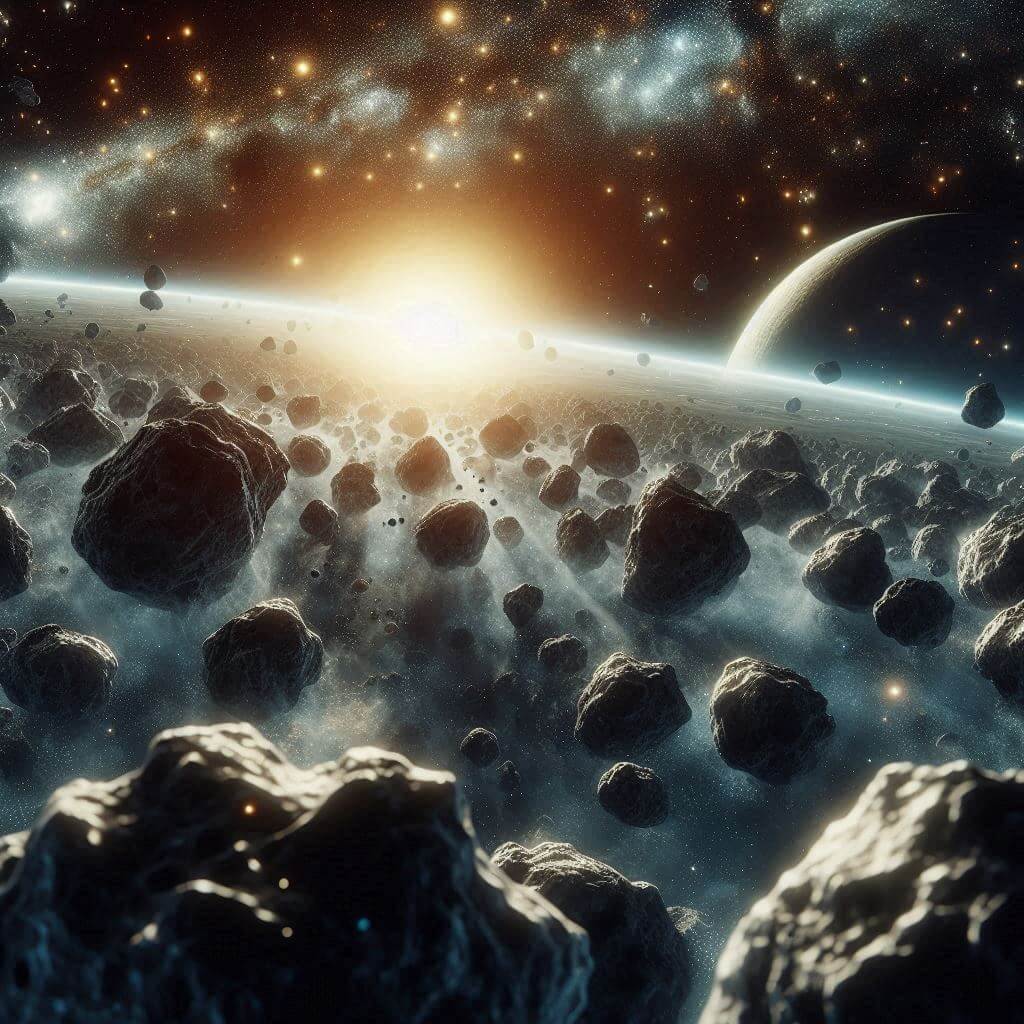Asteroids are rocky, small Solar System bodies that orbit the Sun. These are primarily found in the asteroid belt between Mars and Jupiter. However, they can also be found in other regions of the Solar System. Regions such as near-Earth asteroids (NEAs), trojan asteroids, and centaurs.

- 1. Asteroid Belt: This region contains most asteroids, stretching from about 2.2 astronomical units (AU) to 3.3 AU from the Sun. Experts estimate it holds millions of asteroids, ranging in size from small boulders to dwarf planets like Ceres, the largest object in the asteroid belt with a diameter of about 940 kilometres.
- 2. Near-Earth Asteroids (NEAs): These are asteroids whose orbits bring them close to Earth’s orbit. NEAs are further classified into three subgroups based on their closest approach to the Sun:
- Apollos: Cross Earth’s orbit from the outside.
- Aten: Cross Earth’s orbit from the inside.
- Amors: Approach Earth’s orbit but do not cross it.
- 3. Trojan Asteroids: Asteroids sharing the orbit of a larger planet, usually Jupiter, position themselves at the two stable Lagrangian points (L4 and L5) ahead of and behind the planet in its orbit. Smaller groups of Trojan asteroids also accompany Mars, Neptune, and Earth.
- 4. Centaurs: These small icy bodies orbit the Sun between the outer planets, primarily between Jupiter and Neptune. Astronomers consider them transitional objects between asteroids and comets, often attributing characteristics of both to them.
- 5. TNOs (Trans-Neptunian Objects): TNOs are small Solar System bodies that orbit the Sun beyond Neptune, but they are not traditionally classified as asteroids. Discussions of asteroids sometimes include larger TNOs, like Pluto (reclassified as a dwarf planet in 2006), because of their rocky or icy compositions.
Asteroids vary greatly in size, shape, and composition. Rock, metal, or a mixture of both primarily compose them, with some containing ice and other volatile compounds.